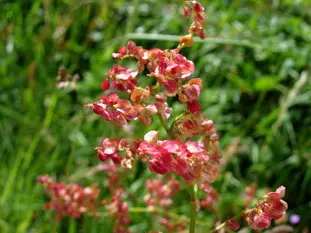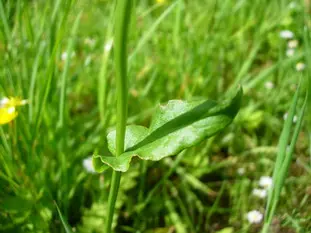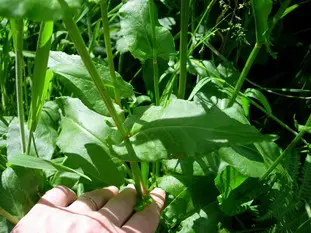Origin

There are generally 2 types of sorrel: garden sorrel with light-green leaves.

But there's also a wild sorrel that grows (in Europe), usually in hedges or fields that aren't mowed.

You'll easily recognize it by the top of the plant, which has the shape of tiny red "petals", grouped together in stems.

These are the leaves we use, darker green, small at the top of the stem...

...and larger at the bottom.
If you're in any doubt as to whether it's sorrel or not, the easiest way is to taste a leaf, and you'll soon know whether it's sorrel or not.




